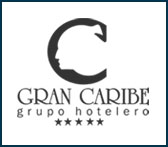Gran-Caribe.com: best deals on authentic cuba hotels!
Gran Caribe Hotels
Welcome to Cuba! In this page Gran-Caribe.com offers you interesting general information about Cuba environment. If you are planning travel to Cuba visit the links on this page and reserve Cuba hotels with Gran-Caribe.com.
Gran Caribe Hotels Destinations
Gran Caribe Hotels by Type
| Mon - Fri | : | 8.30 am | - | 5.15 pm (EST) |
| Sat | : | 9.00 am | - | 12.00 m |
Address:
CTN House, Calle 31, No. 1411, e/14 y 18
Miramar, Playa, Havana
Book online or Email Us
Cuba's main island is the 15th largest island in the world, measuring 104,945 sq km, 1250km long and 191km wide at its widest point. Cuba also lays claim to the 220-sq-km Isla de la Juventud and a further 4200-odd coral cays and islets, most of which are low lying and uninhabited. Cuba is part of the West Indies and is situated within the Antilles Archipelago. Havana is a mere 170km from Florida's Key West, in the USA, and Pinar del Río Province is 210km from Mexico's Yucatan Peninsula. Cuba's other close neighbors are Jamaica, the Bahamas.
CLIMATE
There are no great differences in seasonal temperature in Cuba, its pleasant subtropical climate being augmented by the gentle northeasterly trade winds. The wet summer season is between May and October, and the drier winter season runs from November through April. The average temperature reaches 27°C (81°F) in July and August and 22°C (72°F) in February. An average of 80% humidity exists all year round, with things just a little more sticky in the wet season.and Haiti, 77km away across the Windward Passage.
FLORA & FAUNA
Cuba's most abundant land fauna is reptilian and includes crocodiles, iguanas, lizards, salamanders, turtles and 15 species of nonpoisonous snakes. The largest land mammal is the jutía (Capromys), a tree rat which grows to about 60cm in length. The world's smallest bird comes from Cuba: the bee hummingbird, or zunzuncito (Mellisuga helenae), is just bigger than a grasshopper and weighs only two grams. The tocororo (Priotelus temnuros) is dubbed Cuba's national bird due to its red, white and blue plumage - the colors of the Cuban flag.
There are more than 6000 plant species in Cuba, around half of which are endemic. The ever-present royal palm (Reistonea regia) is represented on the country's coat of arms; there are said to be 20 million palms in Cuba. Cuba's other flora includes the rare and prehistoric cork palm (Microcycas calocoma), a throwback to the Cretaceous Period; the jagüey, a fig with aerial roots; the palma barrigona (big belly palm); the ceiba, the sacred silk-cotton tree, and the mariposa (butterfly jasmine), the white national flower. Much of the southern coast has mangrove swamps that support small fish and birdlife while the majority of the northern coast is bordered by rugged beaches.
© Gran-Caribe.com All rights reserved.










